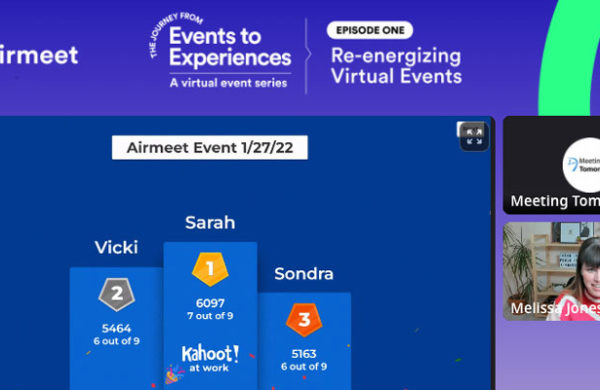
In communications there’s an unwritten rule. And that rule is, any audience of any size will lend their time and attention, their feedback, and in many cases ‘ their resources, in exchange for expert insight, ahead of the curve ideas and solid advice, if delivered through a flawless presentation.
The momentum is on the presenter’s side.
Audiences want speakers to do well, connect with them and deliver strong presentations that are not only rich with information, but full of takeaways that can later be shared with their associates, peers, business leaders or employees. But even with the stage set for success, lack of preparation by speakers tends to be the most common presentation problem. And presenter procrastination, including sending presentations to tech teams at the last minute can lead to miscommunications that expose speakers to embarrassing gaffs and unnecessary mishaps. Whether scheduling a live or virtual event, speakers should always be proactive about reaching out to an experienced event planning partner. Plus, communicating with tech teams in a timely manner to avoid mismanaged presentation setups and ensure that outdated or mismatched technology or poor presentation tools are identified and addressed should be a priority. With that said, virtual or live, timeliness and a good event planner with a wide array of tech solutions can set the stage for success. To help speakers hit their mark, Meeting Tomorrow (MT) has put a helpful list of best presentation practices together. Feel free to pass this along if you’re an event or meeting planner to the speakers you are helping to prepare.
1. Be prepared
Try out your technology before you present. Live or virtual, record and review your presentation. Know your audience.
- Practice, practice, practice! Repetition is key as you prepare.
- Expect some lag time when advancing slides, especially when presenting to a virtual audience
- Make sure every feature of your technology is responsive. Give yourself time to test presentations, animations, and videos using the technology set up in the room.
2. Be early
Be at least thirty minutes early for live presentations and one hour early for virtual presentations. Being early allows you and your AV partner to iron out any issues.
- Send in your content for tech review ahead of time, and plan a short rehearsal prior to your presentation
- Have a look at the stage, space, and equipment. Walk the stage, or sit in your chair. It’s important to feel comfortable in the space
- Do your sound and presentation check using the technology in the room
3. Count on your charisma
Live or virtual, eye contact is key. Start with a good microphone and sound system. Look at the camera, not the screen.
- Relax, breathe, and be confident
- Be warm and kind and your audience will be too
- Be patient with audience members
4. What you wear matters
In addition to being comfortable with your clothing, it’s important to know which clothes are best for live vs. virtual presentations.
- Wear clothes that are compatible with clipping on a lavaliere microphone. Remove name badges and necklaces to avoid extra noise on the microphone
- If virtual or recorded, avoid wearing hot pink, red, or all black
- Shiny fabrics, like silk, may reflect too much light back at the camera. Busy patterns, like houndstooth, create a vibrating effect on camera
5. Always stand when you speak
Whether live or virtual, you should stand when you present. This opens your diaphragm, allows you to breath and helps you to focus.
- Speak clearly and be measured with your speech
- Don’t be afraid to pause between thoughts
- Walk or move when possible to engage with the full audience
6. Be efficient
Audiences have limited attention spans. Avoid spending more than ten minutes on any one point. Attention spans are short for live presentations, and even shorter for virtual presentations.
- Use relevant stories to draw your audience in
- Make your point and stay focused on your core messages
- Keep polls and questions relevant to your message
7. Take advantage of your support systems
Make sure a team member or tech partner is available to tackle issues before, during and after your presentation. And ask a team member to field emails and incoming questions.
- Have a team member keep a queue for questions
- Allow audience member subject matter experts to answer other audience members’ questions
8. Are you connecting with your audience?
Use body language to connect with viewers. Look into the camera or at the audience, as opposed to your script.
- Draw from what you and your audience have in common
- Remember eye contact is essential. Looking into the camera will help you make eye contact with your virtual audience.
- Show you know your audience by tailoring your presentation to them
9. Keep it simple
Your visuals should be easy to see, read and understand. Reduced word counts work best. Avoid complicated graphics.
- Stay away from slides with fine print or too many words
- Fewer animations will simplify your message. Use visuals that support your message without being a distraction
- Keep your vocabulary easy to understand, and provide simple definitions for industry specific terminology
10. Remember, the audience is on your side
If you have any doubts, stage fright or hesitation, refer to the quote above regarding communication’s unwritten rule.
- Viewers are looking forward to learning from you
- Share something they can share with others
- And give them something to brag about


